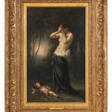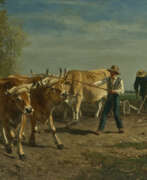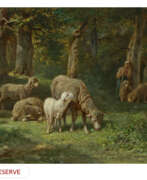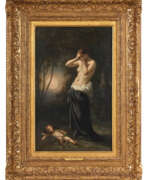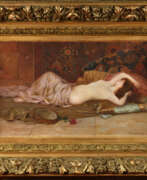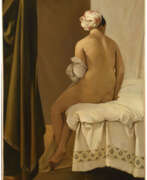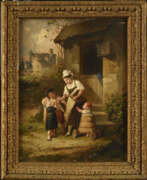Barbizon School

Barbizon School
The Barbizon School was a pivotal art movement that emerged in France in the mid-19th century, marking a significant transition towards realism in landscape painting. This movement was part of a larger European shift toward naturalism in art, and its artists were inspired by the Romantic movement's search for solace in nature. However, the Barbizon painters diverged from the melodramatic picturesqueness of Romanticism, focusing instead on a more direct, unadorned depiction of nature.
Central to the Barbizon School was its emphasis on painting en plein air (outdoors), a practice that allowed artists to capture the natural environment with immediacy and authenticity. This approach was a departure from the traditional studio-bound methods and led to a more realistic representation of landscapes. The artists associated with this school often chose rural and forested areas, particularly the Forest of Fontainebleau near the village of Barbizon, as their subjects.
Key figures in the Barbizon School included Théodore Rousseau, known for his passion for the Forest of Fontainebleau and his influence on other painters in outdoor painting excursions; Jean-François Millet, who focused on rural and peasant subjects; and Jean-Baptiste-Camille Corot, who played a crucial role in mentoring younger artists and influencing the Impressionists with his loose style and emphasis on light.
The Barbizon School's influence extended beyond France, impacting artists in other European countries and the United States. In America, the movement influenced the development of the American Barbizon School and impacted artists from or contemporary to the Hudson River School. The works of Rousseau, Millet, and others from the Barbizon School are held in high esteem and can be found in prestigious museums and art galleries worldwide, including the Musée d'Orsay in Paris, the National Gallery of Art in Washington, D.C., the J. Paul Getty Museum in Los Angeles, and The Metropolitan Museum of Art in New York.
For collectors and experts in art and antiques, the Barbizon School represents a crucial chapter in the evolution of landscape painting and the broader history of art. Its emphasis on naturalism and the plein air technique heralded significant changes in the way artists approached and depicted the natural world.
If the history and impact of the Barbizon School, with its revolutionary approach to landscape painting and naturalism, resonate with you, we welcome you to deepen your engagement with this fascinating art movement. By subscribing to our newsletter, you'll gain access to a wealth of information and insights on the Barbizon School and other influential art movements. Our updates will provide you with the latest news, events, and discoveries in the world of art and antiques, tailored specifically for collectors and art experts. Sign up now to enrich your understanding of this pivotal period in art history and stay connected with the vibrant community of art enthusiasts.
| Start of the period: | 1825 |
|---|---|
| End of the period: | 1875 |
